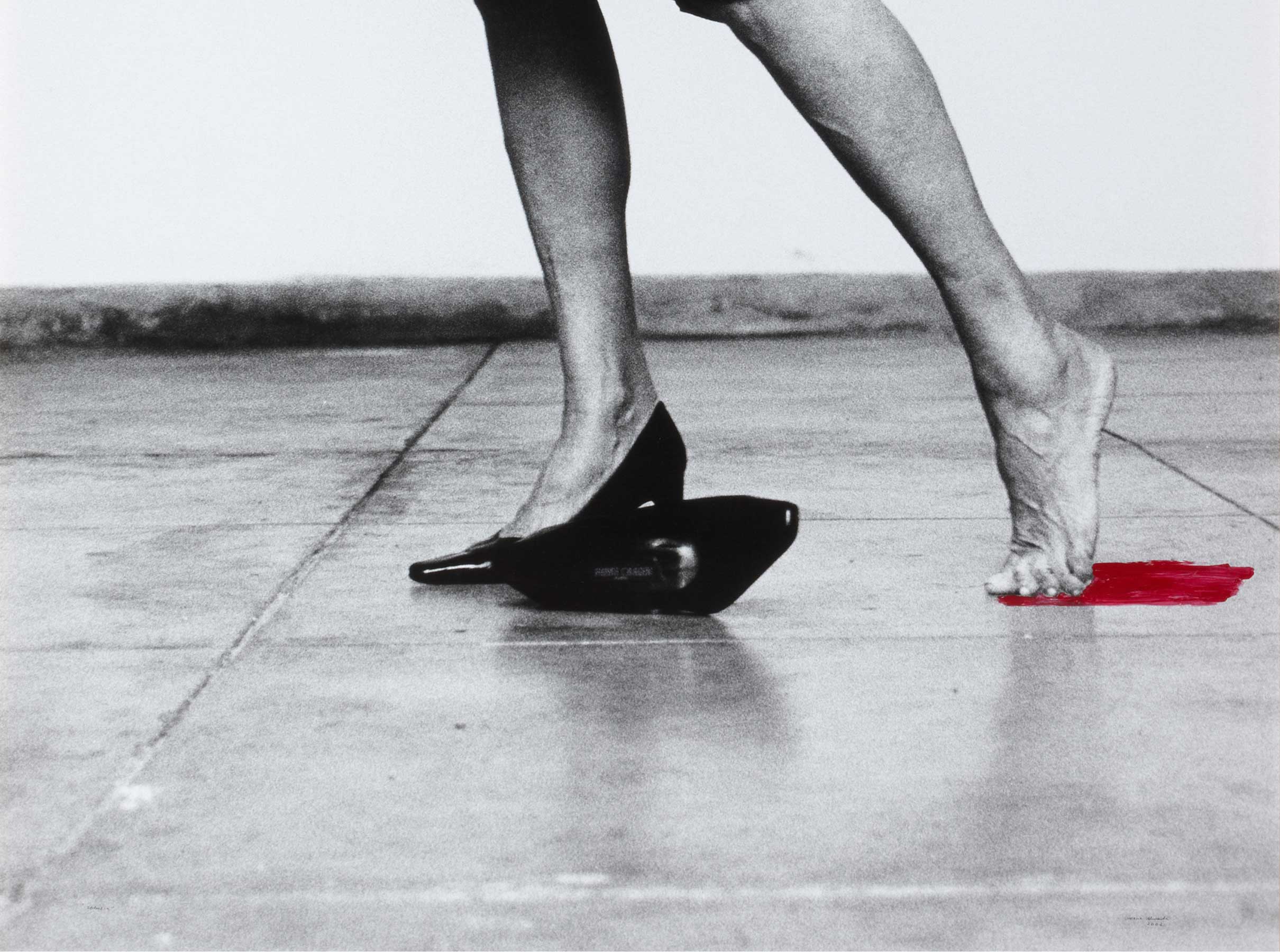Reloj de sobremesa con guarnición [Mantel clock with garniture]
- c. 1855
- Bronze, marble, glass, metal and enamel. Chiselled, carved, cast, enamelled
- 47 x 33 x 12,5 cm
- Cat. R_39
- Observations: Made in Grenoble, France. Louis XVI style. On the dial, 'J. DELAYE / GRENOBLE'. On the platen: 'JAPY FRÈRES & Cie / GRE MED D'HONNEUR' with a cross in the centre, and the numbers '1462 / 70810 / 107477'. Marks on the capitals and feet of the candlesticks: 'G G'. Candelabra measurements: 45.5 x 20 x 15 cm
The case of this mantel clock is shaped like a rectangular plinth shape and made of glass. The front and sides are outlined in beading. At the front, a glazed case outlined in beadwork houses the dial and the movement. The rest of the front face is covered in gilded pierced bronze plates depicting plant motifs. A beaded entablature decorated with ovals and a central loop serves as a base for a burgundy marble amphora with two bronze handles and garlands. The whole sits on a curvilinear burgundy marble base, decorated with pierced gilded bronze plaques depicting plant motifs. Two volutes and two gilded bronze garlands at the sides complete the design. The case rests on four gilded bronze feet.
The dial is a metal plate covered with white porcelain enamelling with the hours in Roman numerals and the minutes in Arabic numerals in intervals of five. Gilt bronze hands with pierced vegetal design. Two winding holes. The author's signature and city are shown above and below the hand stem. The dial is protected behind a glazed window.
The clock has a round-plated pendule de Paris movement with an eight-day going train. Anchor escapement and pendulum, decorated on the bob with the head of the god Apollo. And a striking train which sounds the hours and half hours. Glazed door to protect the movement. On the back plate, the manufacturer's stamped seal.
Japy Frères was one of the most prestigious clockmaking firms in nineteenth century France. It was founded in 1777 by Frédéric Japy (1749-1812). Thanks to his use of sequential production, Japy pioneered the industrialisation not only of complete clocks, but also components. He brought together a number of local clockmakers, concentrating them in a factory in Beaucourt, a small village in the County of Montbéliard, his birthplace. There, these artisans invented machines to mass-produce screws, wheels, pivots, etc., and perfected the process of firing the enamel for the clock dials. By 1801, the firm had 300 employees. Frédéric made his three sons —Fritz William, Louis and Pierre— partners in the firm and around 1854, it was renamed Japy Frères et Cie. At the Exposition Universelle of 1855, the company was awarded a grand medal of honour and thereafter, the movement plate of Japy clocks bore the exhibition stamp 'Japy Frères & Cie / Gde Med d'honneur'. The workforce was expanded to 500 as output grew steadily. This increased production led to a drop in prices. They were awarded another grand medal of honour at the Exposition Universelle of 1867. Although the third generation of the family kept up the business, their offspring did not want to take it over and the factory finally closed in 1900. In 1930, an attempt was made to relaunch the company and appeal to a wider market by manufacturing clocks with pewter cases. However, sales were limited and, like most French clock and clockmakers, the Second World War finally drove them out of business.
An Empire-style clock depicting a lady reading in a library is preserved in the Museum of Decorative Arts in Prague (Inv. No. 16,575), signed on the movement by Japy Frères & Cie. and dated ca. 1810. The case was made by French sculptor André-Antoine Ravrio. There are also four clocks in the Palacio Nacional Da Ajuda in Lisbon, signed on the movement by this clockmaker. One depicts the god Neptune and his court of Nereids and sea horses (Inv. No. 356); another —also with the mark of the 1855 medal of honour— in blued bronze, shows a young man in Arab costume playing a flute (Inv. No. 859); another is in a wooden polychrome case with an allegory of spring ( Inv. No. 2051); and the last is a blued bronze clock with garniture intended for the Chinese market, because the figures are of two Chinese lions supporting branches housing the dial and movement (Inv. Nos. 3538, 3539, 3538).
Tardy, in his Dictionnaire des horlogers français, lists a clockmaker surnamed Delaye, who was active in Grenoble in 1840.
The Louis XVI style that emerged in the mid-eighteenth century spawned a wide range of models and, as many continued to be made during the nineteenth century, when dials and cases were not signed, they are difficult to date. The most commonly used materials were bronze and marble. The hour cartouches typical of the old Louis XIV style clocks disappeared, and the dial became a single piece of white 'porcelain' enamelled metal.
This model evolved from the 'pendule borne', a rectangular case almost always made of bronze, with a marble pedestal encasing the movement and the dial. Glazed apertures reveal the movement and clock pendulum. Beading, vegetal motifs and volutes are common on the cases of these clocks. They are usually surmounted by urns from which garlands are suspended.
The candelabra are tripod-shaped, with a central shaft or stem and three arms adorned with volutes and beading. Four sconces and four capitals. The curvilinear base is in burgundy or brown marble with gilded bronze plaques featuring intertwined branches in the more elongated areas and rosettes on the projections. Each candelabrum has three feet.
The stamp on the back plate of the movement indicates that the clock was manufactured sometime after 1855, when Japy Frères was awarded the Grand Medal of Honour.
Other works by J. Delaye

![Reloj de sobremesa con guarnición [Mantel clock with garniture]](/f/webca/INF/assets/img/fff.png)